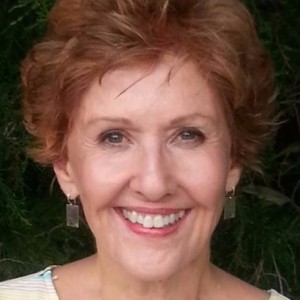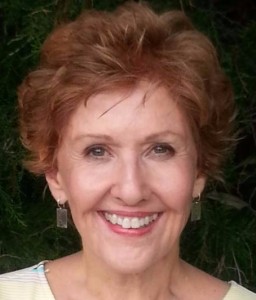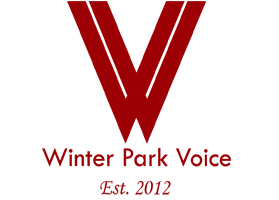by Geri Throne - Guest Columnist | Apr 15, 2016 | Library, News, Zoning and Development
City Hall to Move Next?
Now that Winter Park voters are on board to pay for a brand new library, the city is cautiously considering moving city hall into the current library building.
After city staff recommended exploring the idea Monday, city commissioners called for more information about the site’s strengths and weaknesses. A staff report said the building was in “good” condition with a “fairly new” heat and air-conditioning system and energy-efficient lighting. City Manager Randy Knight also said some current city-hall functions could be moved to another site if they didn’t need to be in a prime location.
Not everyone was enthusiastic about the idea, however. Commissioner Sarah Sprinkel noted the city already knows about the existing library from the research done by the Library Facility Task Force. The task force nixed renovating the building after concluding it has too many challenges, including poor wi-fi connections and limited space and parking.
Commissioners Pete Weldon and Carolyn Cooper both stressed the importance of hearing from the public before making any decision about city hall or any other high-profile city properties valuable to residents. Cooper said it was “fiscally responsible to explore reuse of that [library] building,” but she would not support selling the property.
One staff option for city hall never made it into the discussion. Staff raised the possibility of another bond-issue to build a new city hall on the Park Avenue site, but Mayor Steve Leary said any discussion of that idea was “premature.”
Meanwhile, Winter Park’s new library seems destined to be built in Martin Luther King Jr. Park. The issue was never raised Monday except for a plea from former mayor Joe Terranova during the public-comment portion of the meeting. “You’re going to have to reconsider this,” he said, noting the close vote on the library bond issue. “You have a split community now.”
To comment or read comments from others, click here →
by Geri Throne - Guest Columnist | Apr 14, 2016 | Historic Preservation
Preservation Rule: Friendly or Divisive?
A new alliance of Winter Park commissioners is ready to thumb its nose at a historic preservation rule and return to the good old days of four months ago.
Mayor Steve Leary, Commissioner Sarah Sprinkel and newly elected Pete Weldon want to resurrect a rule that 67 percent of a neighborhood must agree to form a historic district.
Last December, when a former commission majority reduced that threshold to 50 percent plus one, Sprinkel and Leary opposed it. Now Weldon is in their camp and leading the charge as part of a new majority. He won his seat by defeating incumbent Tom McMacken, an avid preservationist.
City residents don’t want to be forced into historic districts, Weldon insisted, likening them to homeowners associations. Requiring a 67 percent vote would create “a more friendly attitude among the neighbors.”
Sprinkel and Leary blamed the 50-percent-plus-one vote for making things “divisive” in the city.
Commissioner Carolyn Cooper saw it another way. Weldon won by less than 51 percent and the library bond issue by only 51 percent, she said. “Fifty percent plus one is democracy.”
Commissioner Greg Seidel argued he has seen no negative effects from the lower threshold and, besides, no neighborhoods have sought to form a historic district since December. Raising the threshold back to 67 percent, he said, would surely be divisive and would keep the commission from addressing more important matters, such as traffic and underground power lines. “This will just distract us,” he said. He bluntly challenged the board. “If you guys really don’t like it [the historic ordinance] that much, why don’t you just vote it out? You’re going to have the same uproar.”
Later, Seidel questioned what the commission was doing to address residents’ biggest concern. “When I ran for election, the big campaign issue was, What was I going to do to save the character of the city?” he said. “What I see the vote doing today is going in the opposite direction.”
The mayor disagreed. Leary listed three projects – the current golf course refurbishing, the Rollins College Alfond Inn and the new civic center/library – as evidence of recent actions that save the city’s character. When Seidel noted that residents might see some of those as problems, Leary shrugged. “There you go. You’re going to have an argument on everything.”
Despite the meeting’s strongly worded exchanges, commissioners reached significant compromises on historic preservation. They rejected an “opt-out” clause that would have let homeowners off the hook if they didn’t like their historic district’s rules. Leary and Sprinkel said they were satisfied reinstituting the 67 percent requirement. Commissioners also agreed to include “voluntary preservation” as a way to achieve the ordinance’s objectives, and to develop a more detailed process for deciding a structure’s historic value.
Most commissioners also agreed the Historic Preservation Board should keep its power to grant variances to historic structures. Weldon had wanted to give that power to the Board of Adjustment, which is tougher on allowing exceptions to the building code. He said some people list their houses as historic to “game the system” and more easily receive variances..
Several residents at the meeting objected to returning to the 67 percent rule.”Let the ink dry on the paper before we change it,” said Drew Krecicki. “Let’s chill out and give it a year.”
Frank Hamner, who assisted the task force that last year revised the preservation ordinance, said the only other times the city demands a 67 percent vote is when a neighborhood decides whether to tax itself to make improvements, such as to put in sidewalks.
No dates have been set for the public hearings and formal votes on the proposed changes.
To comment or read comments from others, click here →
by Geri Throne - Guest Columnist | Nov 2, 2015 | Events, Historic Preservation
Historic Myth-Busters
Historic Preservation = Enhanced Property Values
 Dispelling one myth after the next, a panel of experts exposed the truth about historic preservation to a crowded room at the Winter Park Community Center.
Dispelling one myth after the next, a panel of experts exposed the truth about historic preservation to a crowded room at the Winter Park Community Center.
The three panelists, who spoke October 29 at an event co-hosted by the Winter Park Voice and Friends of Casa Feliz, were Kathleen Kauffman, Historic Preservation Chief of Miami-Dade County, Christine Dalton, Historic Preservation Officer of the city of Sanford, and Richard Gonzalez, AIA, immediate past president of the Florida Trust for Historic Preservation. The panel was moderated by Senior Orlando Sentinel Columnist, Beth Kassab.
First came the news that Winter Park isn’t special in the struggle to save its heritage. Throughout Florida, rising land values are luring investors who gobble up older, smaller homes and replace them with massive, profit-making structures.
McMansions Thrive in Expensive Dirt
“It’s not just here,” said Kauffman. “It’s everywhere in the state.”
That news may have been small comfort to the more than 80 people attending the informational event. Most seemed concerned about protecting buildings that reflect the city’s heritage. The panel was held eleven days before the City Commission’s vote Nov. 9 to revise its historic preservation ordinance. Missing from the audience were the city staffers and most of the appointed board members, invited because they are involved in preservation decisions.
Property Value Fears Debunked
For those who did attend – interested residents, one member of the city’s Historic Preservation Board, Rebecca Talbert, and one City Commissioner, Carolyn Cooper – the panel had encouraging news, too. Fears about diminished property values and unhappy homeowners turn out to be myths. Cities with strong historic districts have healthy property values, satisfied residents and even happier real-estate agents, the panelists agreed.
Dalton, who described herself as “one of the most pro-development people you’re ever going to meet,” said she has heard claims that historic districts hurt property values, but she said, “That is not at all what we’re seeing” in Sanford.
“I get Realtors’ calls all the time asking, ‘When are you going to expand the size of the districts?'” she said, noting the strong demand for homes in Sanford’s historic districts.
No Documented Cases of Lowered Values
Kauffman said her research found no documented case anywhere that [a historic district] lowers property values. Instead, she found the opposite. People are motivated to buy when they know their investment in a historic home will be protected from the whims of indifferent neighbors, she said. Historic districts also tend to get more attention from City Hall when it comes to services and amenities, like street lights and utilities.
Still Plenty of Room for McMansions
Those who want to build homes not in keeping with historic guidelines still have plenty of choices, said Gonzalez. Most cities in Florida are like Winter Park, with only about five percent of its land considered historic, he pointed out. “So if you want to build a McMansion, go pick on that other 95 percent.”
When Kassab asked if people worry about having less control over their homes, panelists observed that preservation staff typically work closely to help homeowners. Ninety percent of requested changes in Sanford are minor ones dealt with easily by staff, Dalton said.
Preservation Staff Can Help Homeowners Save $$
“Most of the time we work with homeowners, we save them money,” said Kauffman, who regards historic preservation as “one added layer of value protection” for a property owner, rather than additional control. She noted that Miami-Dade doesn’t regulate a home’s interior or changes or additions to the back of a house.
Panelists identified several additional strategies for successful districts — creative incentives for property owners, an independent Historic Preservation Board with qualified members, and commitment to the importance of preservation.
“Getting the right people in positions of leadership is so important,” Dalton said.
To comment or read comments from others, click here →
by Geri Throne - Guest Columnist | Oct 9, 2015 | Zoning and Development
Commission Okays Skinny Lots
Ignores Staff Recommendation
 A snug row of four large homes soon will occupy what is now a vacant, tree-shaded lot on Pennsylvania Avenue. Lot frontages will average 60 feet, instead of the 75- to 85-foot minimum called for in city laws.
A snug row of four large homes soon will occupy what is now a vacant, tree-shaded lot on Pennsylvania Avenue. Lot frontages will average 60 feet, instead of the 75- to 85-foot minimum called for in city laws.
A majority of city commissioners at the September 28 meeting had no problem with that tight squeeze. They ignored city planners’ recommendation to deny the request and snubbed a formula that staff has used for some 30 years to come up with such positions.
Instead, commissioners agreed with their planning and zoning board’s unanimous recommendation for approval. The site’s location at the edge of a neighborhood and enthusiastic support from four nearby homeowners appeared to have swayed the advisory board more than the city’s subdivision rules, its comprehensive plan and staff’s opinion. The homeowners, who earlier had written almost identical letters of support, told the city commission they were glad to see the lot finally developed. No one spoke in opposition.
The .87-acre lot north of Tantum Avenue, owned by the Morse Genius Foundation, is more than big enough for three residential lots, but the request sought several exceptions to the rules. The applicant wanted to create room for four homes, each about 3,500-square-feet in size, to be marketed to empty nesters. Besides the narrower lots, the applicant sought a rear setback of ten feet instead of the required 15 feet to allow rear access. Rebecca Wilson, an attorney representing the applicant, noted the mixed zoning south of the site, including an industrial building, denser residential lots and the city golf course. She argued that nearby homes on Beloit Avenue had rear access and frontages less than 60 feet.
City planners said they had no choice but to recommend denial, even though by one measure the new lots exceed zoning requirements. (They will range from 9,191 to 9,985 square feet, compared to the code minimum of 8,500 square feet.) The frontages, however, would be too small by any measure, staff said. The zoning code requires 75-foot frontages in R1A areas and 85 feet for corner lots. Both the code and the comprehensive plan say a lot split should create lots consistent with homes within 500 feet.
Using a formula in practice since the mid-1980s, Planning Manager Jeff Briggs checked how well the proposal meshed with neighboring residential lots. He found a large majority of those frontages were at least 75 feet wide. The average was 69.7 feet; the median was 75 feet. Expanding the radius to include 91 homes produced similar results.
The only way for the city to approve such a deviation was through a zoning variance, said planning Director Dori Stone. “It’s not staff’s job to ask for approval of variances. It’s our job to recommend enforcement of code regulations.”
Mayor Steve Leary and Commissioners Sarah Sprinkel and Tom McMacken voted for the request, with the condition that the houses vary in appearance. Commissioners Carolyn Cooper and Greg Seidel opposed it. Concerned about large oaks on the site that might be specimen trees, Seidel asked for a tree survey, but staff said code didn’t require it. McMacken said he didn’t agree with those tree rules, “but it’s the code.”
To comment or read comments from others, click here →

 Dispelling one myth after the next, a panel of experts exposed the truth about historic preservation to a crowded room at the Winter Park Community Center.
Dispelling one myth after the next, a panel of experts exposed the truth about historic preservation to a crowded room at the Winter Park Community Center.
Recent Comments